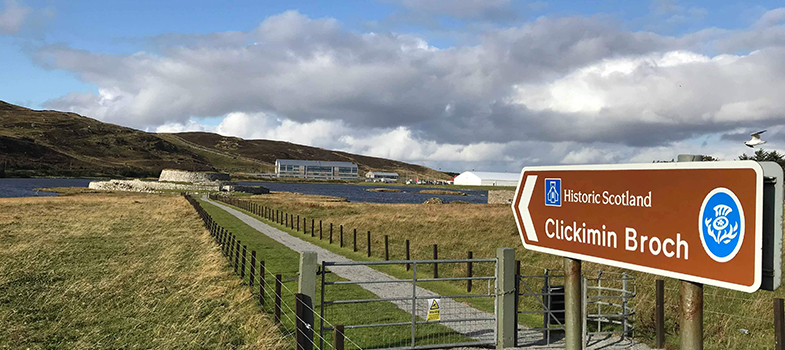12.5 The importance of Scottish travellers in preserving traditional songs
This section will consider the role of members of the Scottish Traveller community in helping to preserve traditional Scots songs through their mainly oral family traditions.
Activity 8
As you read through the case study in this section, make notes on the key aspects you want to ‘take away’ from this as you go.
For example:
- Traveller families are often identified by certain surnames, e.g. Robertson, Stewart, Higgins, MacPhee, Townsley. Travellers speak a variety of languages and/or dialects, including Scots and Traveller Cant, and using influences from Gaelic.
In the 1950s Hamish Henderson was made aware by the journalist and fellow Blairgowrie native, Maurice Fleming, of Traveller families in the berryfields around Blairgowrie in Perthshire who sang traditional songs. Henderson described his fieldwork there as like “holding a tin can under the Niagara Falls” (Henderson, 2004, p. 2). It was soon discovered that among their singing tradition, the Traveller families had classic ballads such as Andrew Lammie, (Child 233), the story of which supposedly dates from the 1600s.
In 1953, Henderson discovered possibly the most prolific contributor to his fieldwork, Jeannie Robertson, in Aberdeen. Recent research has shown that some songs in Jeannie’s repertoire extend back to print versions from the 1600s found in the Bodleian Library at Oxford (Byrne, 2010, pp. 295–97).
Listen to Jeannie Robertson sing ‘My Son David’, a version of Child ballad 13, ‘Edward’.
What should be remembered, however, is that Travellers, much like the settled population, did not sing only Scots songs in isolation, but as part of a wider repertoire of songs sung for entertainment. Although often viewed as an ‘oral’ culture of a less-literate part of society, in fact some Travellers had access to gramophone recordings and featured songs as diverse as Scottish music hall star Sir Harry Lauder and American country singer Jimmie Rodgers in their repertoire.
Most Travellers singing in Scots are associated with Aberdeenshire, Angus and Perthshire. Some of the most celebrated Traveller performers include Jeannie Robertson, Lizzie Higgins, Stanley Robertson, Betsy Whyte, Duncan Williamson, the Stewarts of Blair and the Stewarts of Fetterangus.
The Travellers also sang songs in their own tongue, Cant, a mixture of Romany, older Scots and elements of Gaelic. Jeannie Robertson sings the Cant song Bing Avree Barra Gadgie with a transcription and translation in the notes.
While Travellers still suffer discrimination in wider society today, it is fair to say that they are held in high regard by members of the Scottish folk music community who realise the important role Travellers have played in helping Scots song and oral traditions to survive.
Activity 9
Now go over your notes and write a paragraph of about 100 to 150 words summarising what you have learned about the main aspects of the Scots song tradition so far. Then reveal the answer and compare it with your own.
Answer
This is a model answer. Your answer might be different.
There is a wide variety of Scots song types covering many aspects of human experience. Many songs are found in the ‘oral’ tradition, i.e. not written down. This is particularly true of the Scottish Travellers, who were discovered in the 1950s to have a large repertoire of traditional songs.
Some song types are specific to particular regions, e.g. bothy ballads from the north-east which tell the story of farmworkers and their way of life. The language of Scots song does not always follow dialect areas. Song collecting is a long tradition in Scotland, with songs sometimes classified into numbering systems to help identify them. Many songs were collected in the 20th century by fieldworkers and are now available online in digital form.
12.4 Case study: The distinctive song tradition of north-east Scotland
